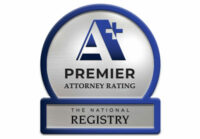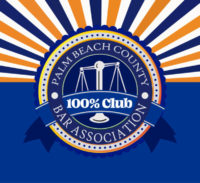Prescription Errors
Prescription Medication & Pharmacy Errors Attorney
West Palm Beach and Palm Beach County
 In 2010, more than 3.9 billion prescriptions were filled at chain drugstores like Walgreens, CVS, Rite-Aid and Wal-Mart. According to the Agency for Healthcare Research and Quality, in 2008, 1.9 million people became ill or injured from medication side effects or because they took or were given the wrong type or dose of medication, compared with 1.2 million injured in 2004.
Did you know that most pharmacies don’t report prescription errors because they’re not required to? The federal government and most states in the U.S.A do not have laws that require drugstores to report prescription errors, even if the cases lead to serious complications or death.
The National Coordinating Council for Medication Error Reporting and Prevention defines a medication error as “any preventable event that may cause or lead to inappropriate medication use or patient harm while the medication is in the control of the health care professional, patient, or consumer. Such events may be related to professional practice, health care products, procedures, and systems, including prescribing; order communication; product labeling, packaging, and nomenclature; compounding; dispensing; distribution; administration; education; monitoring; and use.”
Common Causes of Medication Errors
The American Hospital Association lists the following as some common types of medication errors:
In 2010, more than 3.9 billion prescriptions were filled at chain drugstores like Walgreens, CVS, Rite-Aid and Wal-Mart. According to the Agency for Healthcare Research and Quality, in 2008, 1.9 million people became ill or injured from medication side effects or because they took or were given the wrong type or dose of medication, compared with 1.2 million injured in 2004.
Did you know that most pharmacies don’t report prescription errors because they’re not required to? The federal government and most states in the U.S.A do not have laws that require drugstores to report prescription errors, even if the cases lead to serious complications or death.
The National Coordinating Council for Medication Error Reporting and Prevention defines a medication error as “any preventable event that may cause or lead to inappropriate medication use or patient harm while the medication is in the control of the health care professional, patient, or consumer. Such events may be related to professional practice, health care products, procedures, and systems, including prescribing; order communication; product labeling, packaging, and nomenclature; compounding; dispensing; distribution; administration; education; monitoring; and use.”
Common Causes of Medication Errors
The American Hospital Association lists the following as some common types of medication errors:
- Incomplete patient information (not knowing about patients’ allergies, other medicines they are taking, previous diagnoses, and lab results, for example);
- Unavailable drug information (such as lack of up-to-date warnings);
- Miscommunication of drug orders (between doctor and pharmacist), which can involve poor handwriting, confusion between drugs with similar names (and look), confusion of generic alternative of a prescribed brand name, misuse of zeroes and decimal points, confusion of metric and other dosing units, and inappropriate abbreviations;
- Lack of appropriate labeling as a drug is prepared and repackaged into smaller units (dispensing wrong medication or wrong dosage); and
- Environmental factors, such as lighting, heat, noise, and interruptions that can distract health professionals from their medical tasks.
- When your doctor writes a prescription for you, make sure you can read it.
- When you pick up your medicine from the pharmacy, ask the pharmacist if this is the medicine that your doctor prescribed.
- Open the bag containing your medication container, and make sure the medicine matches your prescription and your name is on the container.
- Make sure you understand how to properly take the medication. Read drug labels. Ask your pharmacist about how much medication to take, when and whether you should expect to experience any side effects. Visit Public Citizen’s Worst Pills, Best Pills website.
- Keep a list of all medication you are taking whether prescribed or over the counter. Include the drug’s name, doctor, reason for taking the medication, dosage, any drug side effects, how you take the drug, etc.











